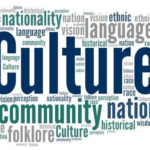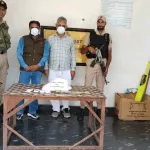The International Day against Drug Abuse and Illicit Trafficking, or World Drug Day, is celebrated on 26 June every year to strengthen action and cooperation in achieving a world free of drug abuse. This year’s World Drug Day campaign recognizes that effective drug policies must be rooted in science, research, full respect for human rights, compassion, and a deep understanding of the social, economic, and health implications of drug use. Kashmir is already shrouded by this menace and needs roadmap to stop it.
Kashmir was once called the ‘Peer Waer’/’ReshWaer’, i.e., the land of saints. There were no violence and illegal activities in Kashmir. How these peace loving people turned into violent mobs and drug peddlers is not known fully, but some say, it is because of some broken promises, economic distress and turning people into manipulative crowd. Also other reasons include corporate-drug industry nexus, after petroleum and arms, the drug trafficking is the third largest business in the world with about 650 billon US dollars. It is estimated in a report of the United Nations (2017) that about 25.5 million people in the world are suffering from drug use disorders. Therefore, the finger goes towards a nexus of corporate- drug market just like military industry complex- but needs further research.
In Kashmir very young children from the age of 17-19 years and in some cases very tender aged children (13 years old) are using drugs. The percentage is increasing day by day, and it is estimated that more than 6 lakh accounting about 5% of total population in UT of Jammu and Kashmir use various kinds of drugs. Amongst these a good chunk of about 30% is females, the womenfolk of Kashmir were once treated as symbol of simplicity, dedication and piousness.
Again the question arises what are the hidden causes that have changed our society, how and why the drugs have been pumped into our dream land. These are the questions which need to be pondered upon by whole society of Kashmir. The brilliant minds of Kashmir should put their heads together and come up with some innovative solutions to deal with the issue and being reforms in the society. This will involve scientific research, education, social reforms. Their whole hearted involvement will hopefully bring the desired results. It has been reported that the common substances used by Drug Addicts in Kashmir are Cannabis, Brown Sugar, Heroine, SP tablets, Anxit, Alprax, inhalants like Fevicol, SR solution, Thinner, Shoe Polish and Paint varnishes. So we need to be cautious on seeing the above mentioned items in possession of our young generation.
A drug to which a person becomes addict does not merely impair the person’s cognitive skills and behaviour but also permanently damages certain abilities depending on the amount of dose. It is a well-known fact that certain changes due to the addictions disappear shortly after drug use while certain anomalies remain permanent. One of the first changes in the brain that may occur in response to repeated drug abuse is tolerance for higher doses; the higher does not only impair functioning of brain but also makes people vulnerable to other health risks like heart problems- as we have witnessed in Kashmir that many young people died because of heart attack. In addition to personal adversities such people may become reason for family crises and jeopardize many aspects of family life, sometimes resulting in family dysfunction. Both siblings and parents are profoundly affected by drug-involved youth. Substance abuse can drain a family’s financial and emotional resources. Ultimately such youth ruin their life, societies and nations.
Let’s as responsible citizens be committed to cost-effectiveness of evidence-based prevention strategies, emphasizing their impact on mitigating the harms of drug use. Encourage greater investment in prevention efforts by governments, policymakers, and law enforcement professionals, highlighting the long-term benefits of early intervention and prevention.Let us equip communities with the tools and resources to implement evidence-based prevention initiatives, fostering resilience against drug use and promoting community-led solutions.Let us promote dialogue and collaboration between stakeholders to enhance evidence-based prevention practices and policies, fostering a supportive environment for knowledge sharing and innovation.
We also need to raise awareness about the importance of community engagement and participation in designing and implementing effective drug prevention programs, empowering communities to take ownership of prevention efforts.The youth need to be provided with the knowledge, skills, and resources to become agents of change in their communities, advocating for drug prevention initiatives and amplifying their voices in the conversation. Also, fostering international cooperation and collaboration among governments, organizations, and communities to develop and implement evidence-based strategies for combating drug trafficking and organized crime, recognizing the global nature of the drug problem and the need for coordinated action (call of this year’s world Drug Day) is needed.
In Kashmir it is the need of the hour that mass movements should be organized to aware people about this menace and its ill effects; also programmes should be organized at school level to make children aware about drug abuse. All the political set-up, irrespective of their ideology, civil societies, ‘Mohalla committees’, religious leaders should discourage this menace across length and breadth. Collective steps should to be taken to stop this ill practice and to prevent our youth to be manipulative crowd.The drug mafias should be treated with iron hand as we don’t want Opium Wartheory prevails in this region and or have manipulative societies that can be controlled and dictated easily.
The message of this year’s World Drug Day is “Together, let us amplify our efforts to combat the global drug problem, guided by the principles of science, compassion, and solidarity. Through collective action and a commitment to evidence-based solutions, we can create a world where individuals are empowered to lead healthy, fulfilling lives” and we as a responsible members of society in this beautiful land need to shoulder our responsibility to stop this menace.
(Author is Assistant Professor, Department of Botany, North Campus, University of Kashmir. Feedback: [email protected])







